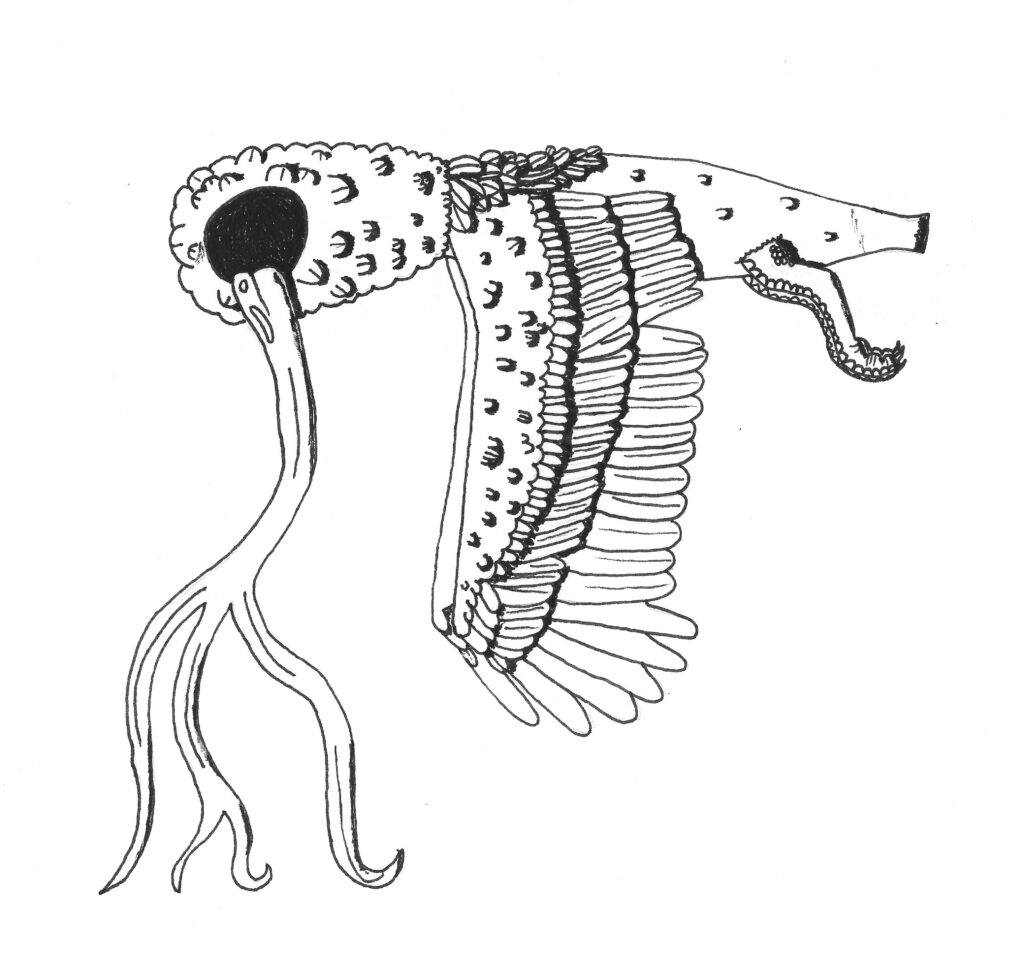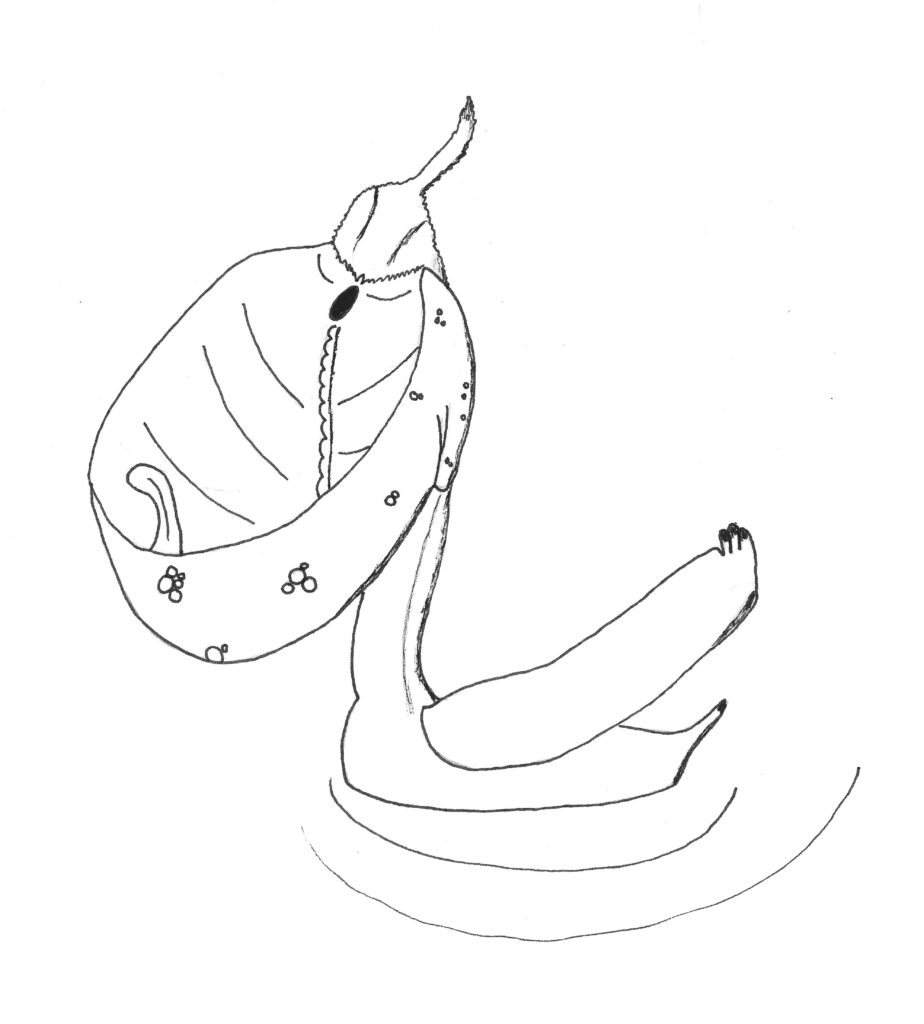
A tree roc.
World: Alfheim
Diet: Large animals
Wingspan: 300′
Lifespan: 300 years
Habitat: Mountains, enormous trees
Activity Cycle: Diurnal
Vaguely resembling birds, rocs are enormous flying predators native to Alfheim, although small populations have established themselves in appropriate regions of Midgard. There are two different species of roc, with only one of them found in Midgard. This species is known to most human scholars as “mountain rocs”, but in Alfheim they are called tree rocs.
In both words, rocs find their place in the centermost pinnacles of their realms. In Alfheim they are found in the great World Tree, a towering pillar that scrapes Alfheim’s dome. Large enough for entire cities, the branches of this tree are still only enough for one roc to form its territory, and they will violently compete for space among the branches, especially those most valued by the species. Favored branches are those least accessible to egg-hunters, over land instead of sea, and at a middling altitude, where the temperatures favor the development of eggs.
A male roc will have a larger range than a female, overlapping with the territories of several females. The females, however, will only allow these males to enter when they are fertile, which can happen year-round. One month after fertilization, the females lay a single massive egg, larger than a peasant’s shack. This egg will take another year to hatch, and the chick will be landlocked for another 5. From 5-10, the fledgling roc will still remain with its mother, although it hunts on its own. Once they are about 10, they are kicked from the nest and tend to gravitate first to the dangerous lower branches, where they remain until they reach their adult size at about 20 years of age and can claim territories of their own higher up.
In Midgard, rocs are only known in the Omfalia mountain range. There, they behave quite similarly to their Alfheim counterparts, replacing the place of the World Tree with the mountains they fly among. They are extremely rare there, limited by having less space to make their nests, forced to be at the top of the mountains, for they are shorter than the World Tree. Just like those of Alfheim, they fly out from their roosts daily to drag their tongues over the ground from hundreds of feet up, catching animals and pulling them into the great hole that serves as their head. The shadow of a roc will bring terror to small communities and cities alike, as the creature will feed upon people and livestock equally. Against the few beings who can threaten it physically, a roc has a secondary weapon, puking up its stomach contents in a horrid wave of acid and half-digested flesh.

Oceanic rocs are similar in size and lifespan, but instead of the great World Tree or mountains, they take up residence on small islands. These rocs form permeant breeding pairs, almost always just one or two couples per island unless it is particularly large. Their children take roughly as long as a mountain roc’s to grow up, and so oceanic rocs trade off parenting duties, each parent taking multi-month trips out to sea to feed while the other watches their child. Oceanic rocs can swim before they can fly, and juveniles are often seen off the coasts of their islands. The defending parent is often dangerous to passing ships, dropping boulders onto them from a great distance.
Instead of long tongues, oceanic rocs feed with huge scoops that they use to filter the water, catching hundreds of fish before swallowing them. Mysterious “fish rains” in some areas are likely the result of rocs losing their meals for unknown reason while over towns. It has been suspected that sculptures similar in size and shape to a young roc can fool them into regurgitation, although nobody is willing to test this further.
